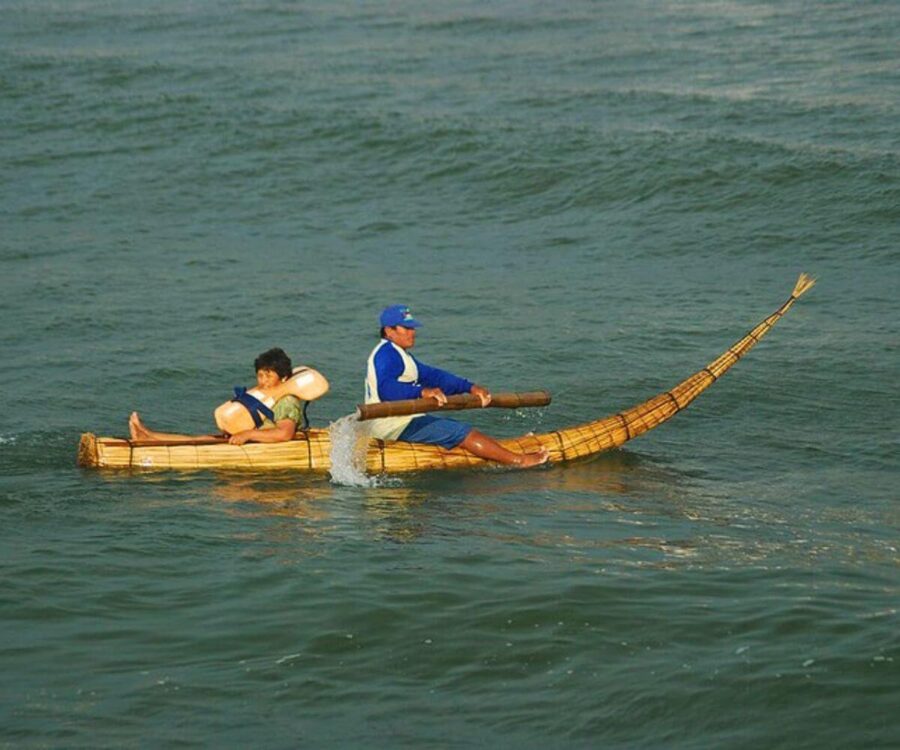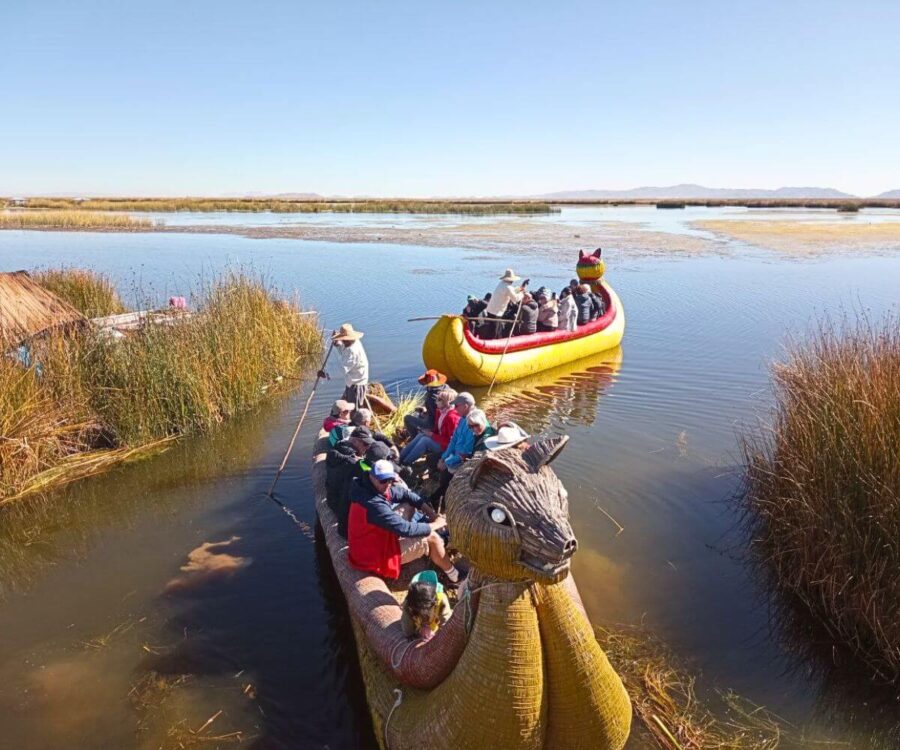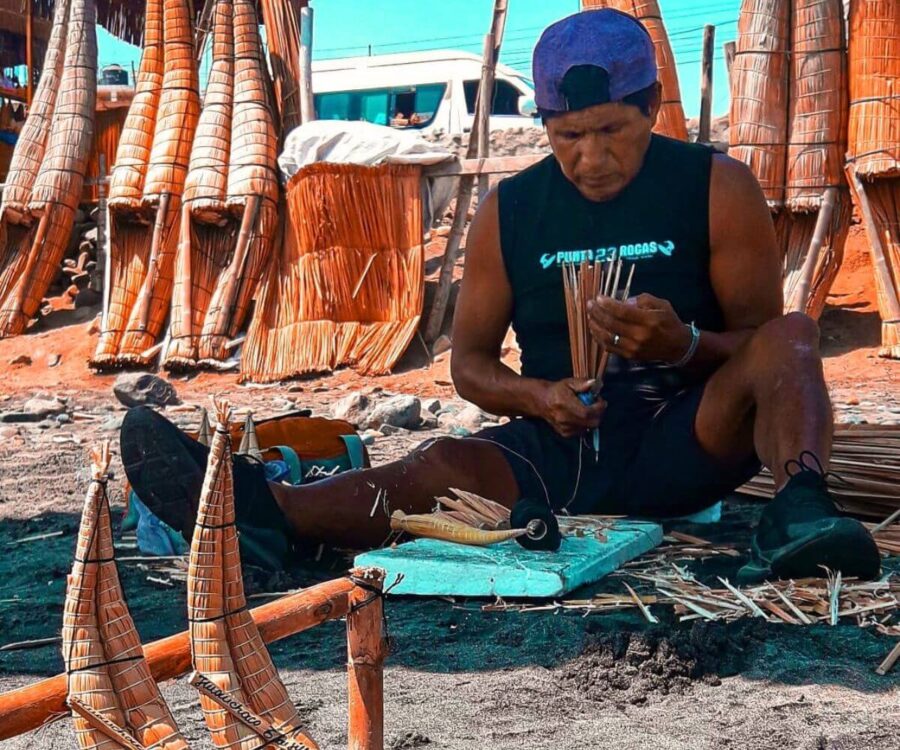The totora caballitos are a living legacy of Peru, these vessels are used by fishermen on the northern coast of the country and symbolize an artisanal practice across the entire coastal region. Today, they have become a cultural attraction, with a tradition dating back 3,000 years. Stay with us to learn more.
Table of Contents

They are vessels made from totora reeds, an aquatic plant that grows along the coasts of Peru and in Lake Titicaca. These rafts have an elongated shape and resemble "little horses." They have been used as a means of transportation and fishing tools by various cultures, including the Moche and Chimú, located in the northern part of Peru.
Totora caballitos are characterized by being light and flexible, allowing for agile handling on the sea. Their construction is based on several layers of interwoven and tightly packed totora, which makes them both resistant and buoyant. These caballitos still maintain their ancient designs.
The caballitos date back to the ancient cultures of the Peruvian coasts, which developed these vessels for fishing and transportation. Archaeological evidence suggests they are 3,000 years old.
The Moche and Chimú cultures used them for daily tasks such as navigating, fishing, and sometimes conducting ceremonies. They are still preserved today and passed down from generation to generation as part of cultural identity.

In addition to the coastal region, they are also used in the southern part of the country, especially in Lake Titicaca, in the Puno region, where local communities use totora, particularly in the Uros floating islands. Likewise, both the boats and the islands are made from totora, a plant that grows in the lake.
The difference in the structure of the rafts in Titicaca shares construction techniques with the coastal totora caballitos, but they differ in shape as they are larger, and some are shaped like animals, showing the differences between cultures.
Totora caballitos are distinguished by their design, materials, and construction method. For example:
Traditionally, they have been an essential tool for fishing, used to venture into the sea, allowing fishermen to cast their nets and collect marine species. The lightness of the caballitos makes them efficient for this work.
Today, they have become a tourist attraction, offering visitors the opportunity to experience a ride in these vessels and learn about their history, construction, and handling. One of the beaches where you can see them is Huanchaco, located in the La Libertad region.

Building a totora caballito is a process that requires great skill. Most artisans or fishermen learn to make these vessels from a young age, starting with the collection of totora, which must be dried and treated before assembly.
The basic materials for its construction include totora, natural fibers or ropes, and some basic tools for tying and shaping certain parts. An essential technique is the compacting of the totora, which is done by striking and applying pressure to make the vessel as dense as possible, increasing its resistance.
